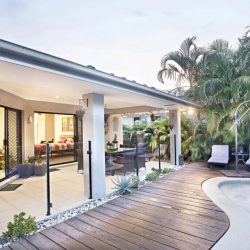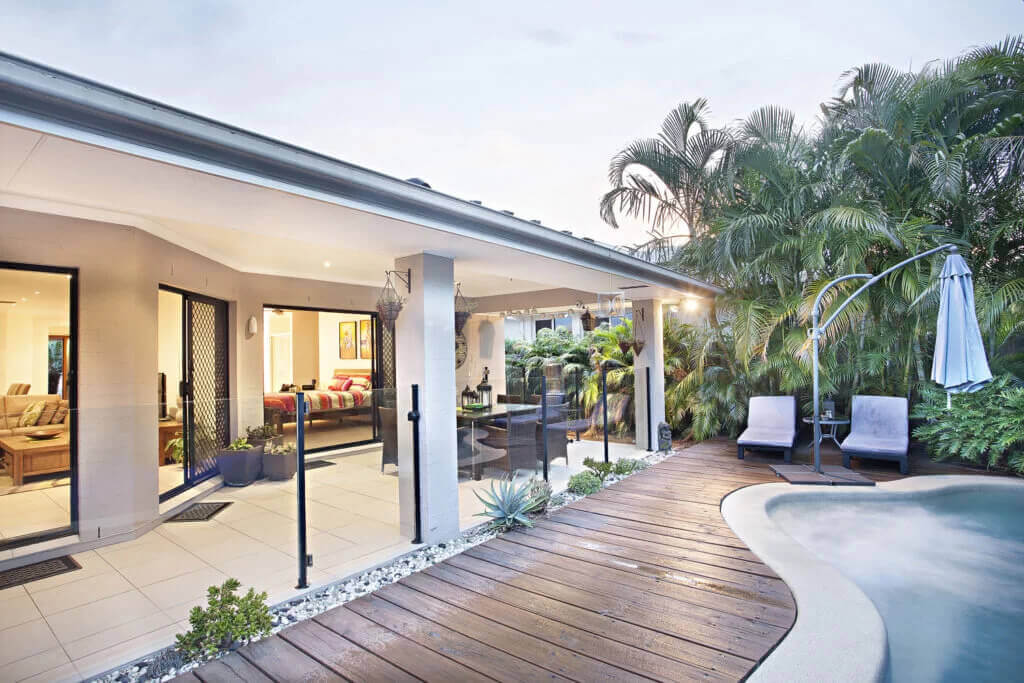Fonzie flats are named after Arthur “Fonzie” Fonzarelli a character from the American sitcom Happy Days, who lived in a loft. They can be sold separately to the primary residence.
With its own separate entrance and self-contained living spaces, a Fonzie flat is clever and discreet. Especially designed for properties with rear lane access, the architecturally designed granny flats provide an innovative use of space and additional income generating opportunities for the family or investors.
Fonzie granny flats are picking up pace thanks to State Government policy, increased demand, investment opportunities, housing affordability and changing demographics.
The proposal includes new ”manor homes” in low density suburbs. The buildings, to be built on street corners, would look like large two-storey homes but contain four separate units.
In Australia, different states have different rules for Fonzie and granny flat development.
While granny flats must be included on the main title, Fonzie flats that are strata subdivided from the main house can be sold separately.
To date granny flats can be rented out in Western Australia, the Northern Territory, Tasmania and ACT but not in Queensland, Victoria and South Australia.NSW also allows Fonzie flats to be built over garages in new developments, subject to council approval.
Requirements for planning permits and approvals also vary between states.
A number of councils have been fast tracking development applications or decreasing the amount of paperwork required for granny flat and Fonzie flat developments. NSW Department of Planning and Environment data indicates that 4818 new granny flats were built during 2014 which is nearly double the 2867 built the previous year and three times more than the 1511 built in 2010.
Greater Western Sydney, in particular, has experienced significant growth across the local government areas of Auburn, Bankstown, Blacktown, Canterbury, Camden, Campbelltown, Fairfield, Hawkesbury, Holroyd, Liverpool, Parramatta, Penrith, The Hills Shire and Wollondilly.
It has been reported that Sydney granny flats for rent cost between $300 to $700 per week with rental yields of up to 15%. Many people are using granny flats and Fonzie flats as a way to subsidise large mortgages.
Rising property prices, rental increases, an ageing community and attempts to limit urban sprawl are contributing to the rise in the popularity of granny flats, particularly in Melbourne and Sydney, according to property specialists.
The cost to build a granny flat can be around $120,000. Building your own granny flat can typically generates an annual rental yield of about 15 per cent, assuming the owner can find a tenant willing to pay the going market rate, says BMT Tax Depreciation, a quantity surveyor that specialises in depreciation schedules for residential and commercial investors. This many not be possible in former mineral boom towns like Perth and Darwin, it warns.
Average depreciation deductions for a granny flat – which includes proportions of utility bills, land rates and borrowing costs – are about $5300 in the first year, rising to a total of more than $23,700 over five years, according to BMT.
Shared areas between the granny flat and owner-occupied property, such as patios, pools and barbecues, can also be deducted depending upon usage, BMT says.
There are cheaper alternatives to get a granny flat or Fonzie flat, such as DIY flat-pack construction kits that can be bought online for less than $10,000 and are delivered in about eight weeks.
Pre-built granny flats from kit home builders usually start about $69,000 for 60 square metres.
Impact on benefits:
- Retirees considering granny flats for rent should check with Centrelink about the impact of rental income on their benefits. For example, if the flat is being rented to a grandmother or another relative for a nominal amount, it would not be regarded as a commercial transaction and neither the income nor the expenses would be taxable or tax-deductible, says Mark Chapman, director of tax communications for H&R Block.
It becomes more complicated if the flat is rented to third parties, or taxable commercial rents are charged. There is also a possible risk of incurring capital gains tax on the main residence, which is normally exempt. If you have owned the property for 10 years but the flat was built only five years ago, you don’t need to worry about CGT in the first five years.
Options for financing a granny or Fonzie flat range from using an equity release from the main residence, home loan refinancing with a different lender or a construction loan, according to Mortgage Choice spokesperson Jessica Darnbrough.
There are dozens of loan packages available, so it could be useful to seek advice from a broker about the best strategy, lowest rates and easiest terms.
The NSW State Environment Planning Policy (SEPP) details a number of requirements related to granny flat development. Some of those include:
- Lot size must be minimum 450 square metres.
- Size of the granny flat maximum 60 square metres.
- Not permitted on environmentally sensitive land.
- Heritage restrictions apply.
- Once the development is completed only one principal and one secondary dwelling must exist.
- Once the granny flat is constructed, the lot can’t be subdivided.
- Granny flats are not permitted on strata subdivided lots or in community title schemes.
- There must not be external alterations to the principal dwelling other than an additional entrance.
- Local Environmental Plans (LEP) also apply to granny flat developments but if there is an inconsistency between the SEPP and the relevant Council’s LEP, the provisions of the SEPP will override those in the extent of the inconsistency.
The government says the plan, which affects growth centres around the Hills, Blacktown, Camden, Campbelltown and Liverpool council areas, will increase affordability and housing choice and help create more than 180,000 new homes over the next 30 years.
But Hills Shire Council has raised serious concern over the proposal, which it says would permit higher densities in areas far from shops, services and amenities. Some critics say the plan, which includes smaller housing lots, would strip streets of their character changing the appearance of many residential areas.
Mayor Michelle Byrne said the region must take its fair share of population growth, but questioned ”why we must aim for the lowest common denominator in terms of housing options?”
A Planning Department spokesman said several councils provided positive feedback, which would ”deliver a greater choice of housing options at different price points whilst creating good places to live”.






